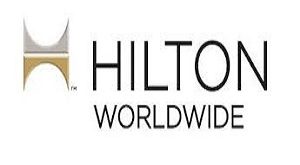Marriott Global, one of the world’s biggest and most conspicuous lodging networks, plays had a vital impact in forming the cutting edge friendliness industry. With its sweeping arrangement of brands, obligation to client support, and devotion to advancement, Marriott has become inseparable from extravagance, solace, and comfort. From its modest starting points as a root brew stand in Washington, D.C., Marriott has developed into a global enterprise with north of 8,000 properties in excess of 130 nations. This article will investigate Marriott’s set of experiences, its ascent to conspicuousness, vital acquisitions, challenges, and its proceeded with development in the accommodation scene.
A Humble Beginning
Marriott Worldwide’s foundations can be followed back to 1927, when organizers J. Willard Marriott and his significant other Alice opened a little A&W root brew stand in Washington, D.C. The stand immediately developed into a famous chain of cafés known as “Hot Shoppes,” which offered reasonable food and beverages during the Economic crisis of the early 20s. With a natural comprehension of client needs, the Marriotts extended the business throughout the following couple of many years, adding drive-in eateries and cafeterias to their portfolio.
In 1957, the Marriotts took a vital action by opening their most memorable inn, the Twin Extensions Engine Lodging in Arlington, Virginia. This obvious Marriott’s entrance into the neighborliness business, making way for its change into one of the biggest lodging networks on the planet. The vision of J. Willard Marriott was clear: to give voyagers quality facilities and uncommon help. Marriott’s future expansion was built on the foundation of this focus on customer satisfaction.
The Growth of Marriott Hotels
During the 1960s and 1970s, Marriott started to extend forcefully, opening new inns across the US. Its accentuation on reliable assistance, present day conveniences, and agreeable facilities separated Marriott from its rivals. In addition, the company pioneered several innovations that would become industry norms, such as the concept of full-service hotels with conference facilities and restaurants and in-room telephones.
During this time, Marriott’s ability to attract business travelers was one of its main assets. As corporate America blast, Marriott situated itself as the go-to decision for chiefs and experts looking for agreeable, exceptional facilities for excursions for work. The organization’s attention on making meeting spaces, business focuses, and show offices set its standing in the corporate travel market.
Marriott’s obligation to advancement stretched out past its lodgings. During the 1980s, the organization sent off Yard by Marriott, a mid-level brand that designated cost-cognizant voyagers who actually needed quality help and conveniences. Yard immediately became one of the organization’s best endeavors, assisting Marriott with contacting a more extensive crowd and extend its piece of the pie.
Strategic Acquisitions and Global Expansion
Marriott Global’s development technique has been set apart by essential acquisitions that have permitted it to enter new business sectors and differentiate its portfolio. One of the main acquisitions came in 1987 when Marriott bought the Home Hotel brand, permitting it to take advantage of the all-inclusive visit market. Home Hotel took care of long haul voyagers, for example, business experts and families, who required facilities for weeks or months all at once. This obtaining assisted Marriott with growing its client base and reinforced its situation in the expanding long-term visit fragment.
One more milestone securing happened in 1995 when Marriott gained the Ritz-Carlton Lodging Organization. The Ritz-Carlton brand, known for its extravagant properties and faultless assistance, permitted Marriott to enter the top of the line extravagance market. This move was vital in laying out Marriott’s presence among wealthy voyagers and in upscale objections around the world. Today, Ritz-Carlton stays one of the royal gems in Marriott’s portfolio, inseparable from extravagance and restrictiveness.
The most extraordinary procurement in Marriott’s set of experiences came in 2016 when the organization finished its $13 billion acquisition of Starwood Lodgings and Resorts. This arrangement extended Marriott’s worldwide impression as well as added a few high-profile brands to its portfolio, including Sheraton, Westin, W Inns, and St. Regis. The procurement made Marriott the biggest lodging organization on the planet, with more than 30 particular brands and a presence in practically every significant market.
Marriott’s securing of Starwood was likewise an essential move to catch the faithfulness of regular voyagers. By joining Starwood’s famous SPG (Starwood Favored Visitor) faithfulness program with Marriott’s Prizes program, the organization made Marriott Bonvoy, one of the most extensive and appealing unwaveringness programs in the business. Marriott Bonvoy offers individuals a scope of advantages, including free evenings, overhauls, and elite encounters, further establishing Marriott’s relationship with its most faithful clients.
Innovation and Technology in Hospitality
Marriott has long recognized the importance of innovation and technology in delivering a seamless guest experience. In recent years, the company has invested heavily in digital initiatives designed to enhance the customer journey from booking to checkout.
One of Marriott’s most notable innovations is the development of its mobile app, which allows guests to manage every aspect of their stay from their smartphones. With the app, travelers can book rooms, check-in and check-out, request room upgrades, and even chat with hotel staff for personalized service. This emphasis on convenience and customization has helped Marriott stay ahead of the curve in an increasingly digital world.
Marriott has also embraced emerging technologies such as artificial intelligence (AI) and the Internet of Things (IoT) to improve the guest experience. For example, Marriott has piloted the use of voice-activated assistants in rooms, allowing guests to control lighting, temperature, and entertainment with simple voice commands. The company is also exploring the use of AI to enhance its revenue management systems and optimize pricing based on demand.
Additionally, Marriott has been a leader in adopting sustainable practices in the hospitality industry. The company has made significant investments in energy efficiency, waste reduction, and water conservation across its properties. Marriott’s sustainability efforts are aligned with its broader corporate responsibility initiatives, which include commitments to diversity and inclusion, supporting local communities, and reducing its environmental impact.
Challenges and Controversies
Notwithstanding its prosperity, Marriott Worldwide has confronted its portion of difficulties and debates. Perhaps of the main test as of late has been the effect of the Coronavirus pandemic on the movement and neighborliness industry. In the same way as other inn organizations, Marriott encountered a sharp decrease in inhabitance rates and income as worldwide travel stopped in 2020. The organization answered by executing cost-cutting measures, including impermanent terminations, leaves of absence, and cutbacks, while additionally upgrading its wellbeing and security conventions to console explorers as the world returned.
One more discussion that has impacted Marriott is connected with information protection. In 2018, the organization reported a gigantic information break that uncovered the individual data of roughly 500 million visitors. The break, which impacted Starwood’s booking framework, raised serious worries about Marriott’s information security practices and prompted administrative examinations and claims. Since then, Marriott has made significant investments to improve its cybersecurity defenses and ensure compliance with international data protection regulations.
Also, Marriott has confronted analysis over its work rehearses, especially comparable to inn laborers’ wages, advantages, and working circumstances. The organization has been the objective of fights and strikes by worker’s guilds, calling for better compensation and securities for lodging staff. Marriott has participated in dealings with associations and executed drives to help its labor force, however work issues stay a continuous test.
Marriott’s Future in a Post-Pandemic World
As the world emerges from the COVID-19 pandemic, Marriott is well-positioned to capitalize on the recovery of the travel and tourism industry. The company has already seen a rebound in demand, particularly in leisure travel, and is optimistic about the return of business and group travel in the coming years.
Looking ahead, Marriott’s strategy is focused on continued growth through new hotel openings, particularly in emerging markets like Asia, the Middle East, and Africa. The company is also doubling down on its commitment to luxury and lifestyle brands, which are increasingly popular with affluent travelers seeking unique experiences. In addition, Marriott is exploring new revenue streams, including vacation rentals through its Homes & Villas platform, which allows it to compete with companies like Airbnb.
Sustainability will also remain a priority for Marriott as it works to reduce its carbon footprint and meet its environmental goals. The company’s “Serve 360” initiative outlines its commitment to responsible business practices, including reducing carbon emissions, investing in renewable energy, and supporting local communities around its properties.








